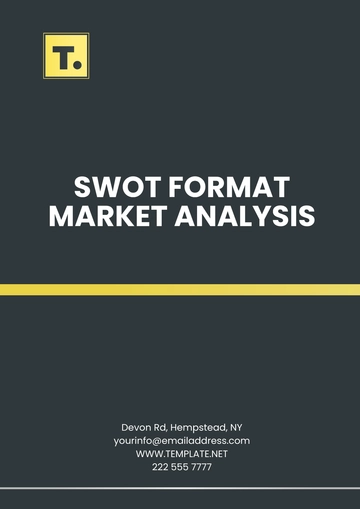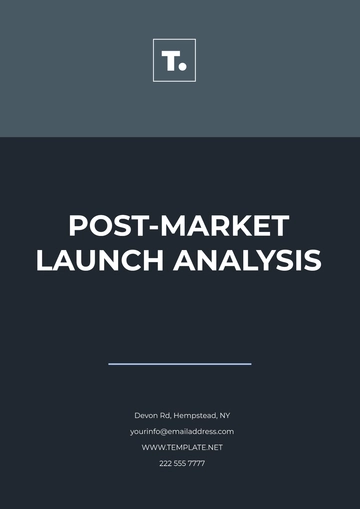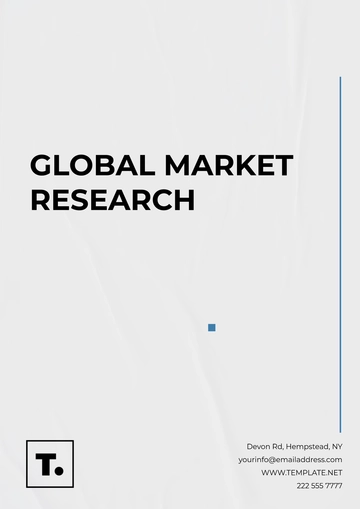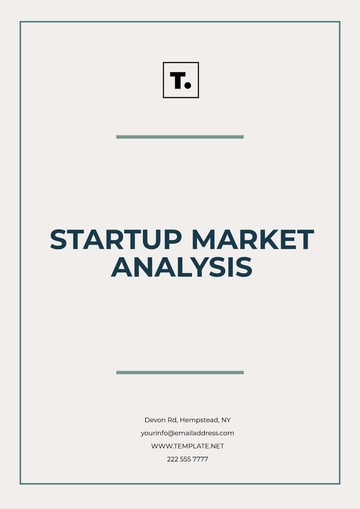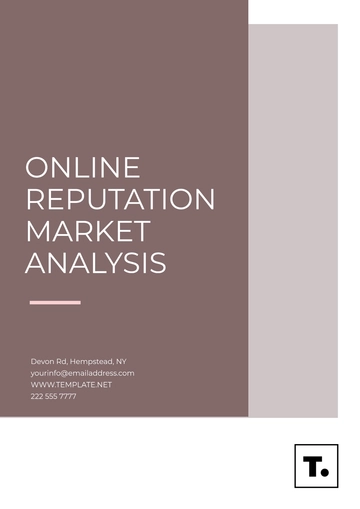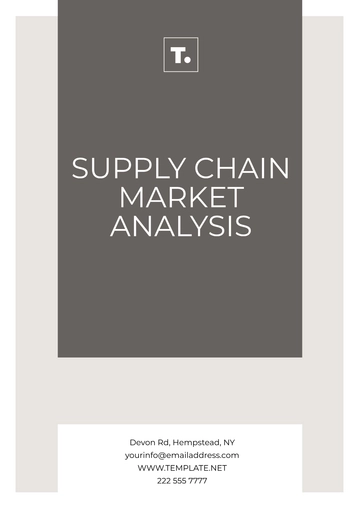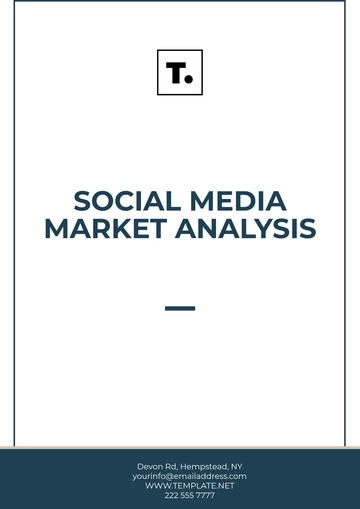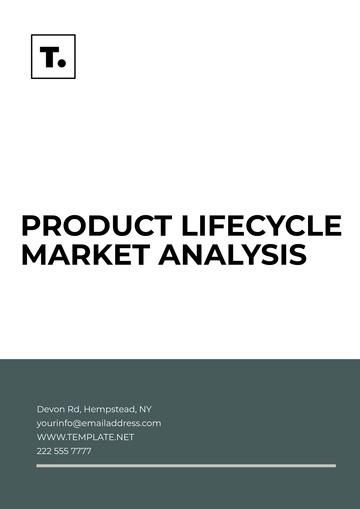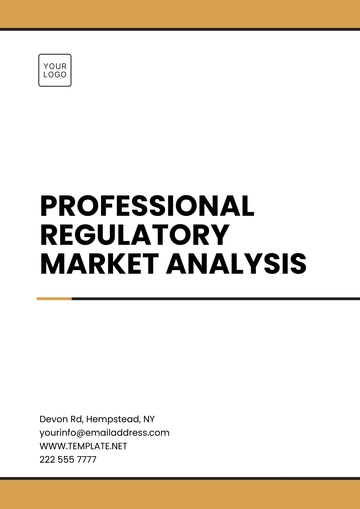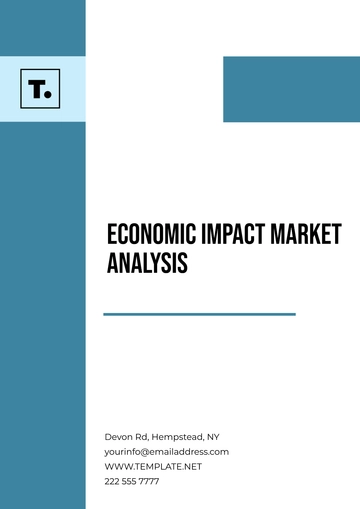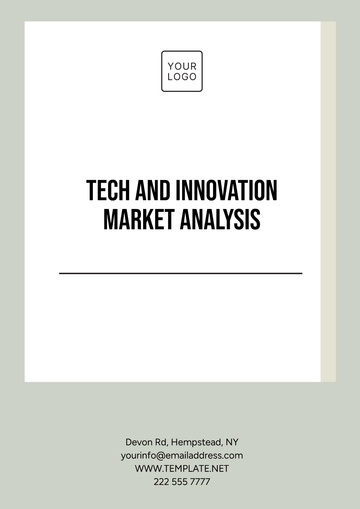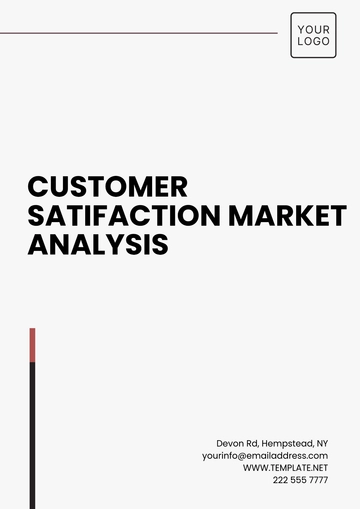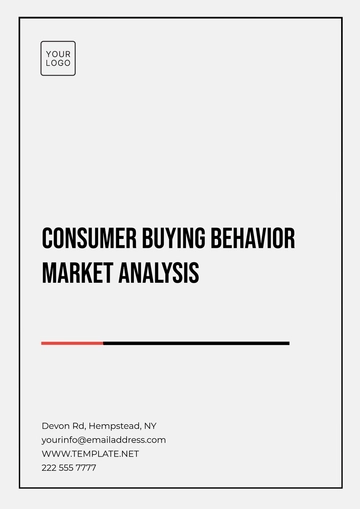Free Trend Analysis

Prepared By : | [YOUR NAME] |
Company : | [YOUR COMPANY NAME] |
Department : | [YOUR DEPARTMENT] |
Introduction
The Trend Analysis aims to identify and assess past and current market patterns to anticipate future directions. By examining data over time, this analysis offers valuable insights into potential growth, risks, and opportunities for organizations. This report will explore various trends within the context of a specified industry or sector, using both qualitative and quantitative methods to predict future shifts.
Objective
The objective of this trend analysis is to:
Identify key market drivers.
Analyze historical data for future predictions.
Forecast potential changes and their impact on the industry.
Provide strategic recommendations based on findings.
Methodology
Data Collection
Data was collected from industry reports, market studies, consumer feedback, and expert opinions. The key periods analyzed cover the years from 2050 to 2060, reflecting the most relevant trends to date and forecasted patterns.
Analytical Approach
A combination of statistical analysis and qualitative methods were used to evaluate:
Market demand and supply trends
Consumer behavior changes
Technological advancements
Regulatory changes
Competitive landscape
Key Findings
1. Market Growth Trends
From 2050 to 2060, the industry saw a steady 7% annual growth rate, driven primarily by increased consumer adoption of new technologies and shifting preferences toward sustainability. The demand for eco-friendly solutions surged, as 45% of market leaders adopted sustainable business models by 2057.
2. Consumer Behavior Shifts
By 2055, consumer preferences evolved dramatically. 70% of customers favored brands with transparent supply chains and strong ethical practices. This shift led to a rise in direct-to-consumer platforms and personalized customer experiences powered by AI-driven solutions.
3. Technological Disruptions
The advent of advanced AI and automation revolutionized the industry, with 50% of the workforce expected to be replaced by automation in 2060. Quantum computing was also adopted, enhancing data analysis capabilities and driving more precise trend forecasting.
4. Regulatory Changes
Significant regulatory changes occurred between 2053 and 2058, particularly around data privacy and carbon emissions. Stricter regulations prompted industry players to invest in compliance and sustainable technology innovations. By 2060, 95% of companies complied with these new standards, reshaping operational frameworks across the industry.
5. Competitive Landscape
The competitive landscape intensified with the entry of disruptive startups focusing on sustainability and innovation. Established players were forced to invest heavily in R&D and partnerships to maintain market share. The number of mergers and acquisitions increased by 30% over the past decade, indicating consolidation in the sector.
Forecast
1. Sustainability as a Competitive Edge
Companies that integrate sustainability at the core of their operations will dominate the market by 2065. Consumers will increasingly prioritize ethical practices, making it crucial for businesses to align with these values to remain relevant.
2. Technological Integration
By 2070, AI and quantum computing will be fully integrated into the business models of leading companies. Automation will handle most operational tasks, and personalized experiences will reach new heights, offering ultra-customized services to every consumer.
3. Emerging Markets
Emerging markets in Africa and Southeast Asia will experience a rapid surge in demand as internet penetration increases. Companies tapping into these markets early will benefit from a 20% growth rate in sales between 2060 and 2070.
4. Regulatory Evolution
Future regulations around sustainability and data protection are expected to become more stringent by 2065. Organizations failing to comply will face severe penalties, further driving innovation toward clean technologies and responsible data handling practices.
Recommendations
Based on the analysis, the following recommendations are proposed:
Invest in sustainability initiatives: Focus on reducing carbon footprints and ensuring supply chain transparency.
Leverage AI and automation: Invest in cutting-edge technology to improve operational efficiency and customer engagement.
Prepare for regulatory compliance: Stay ahead of future regulations by adopting proactive strategies that comply with forthcoming data privacy and environmental laws.
Explore emerging markets: Establish a presence in underdeveloped regions to capitalize on new opportunities as market demand grows.
Conclusion
The 2060 Trend Analysis provides crucial insights into market shifts, technological advancements, and regulatory changes that will shape the future. Organizations must remain adaptive, innovative, and compliant with evolving consumer expectations and legal frameworks to secure long-term success.
- 100% Customizable, free editor
- Access 1 Million+ Templates, photo’s & graphics
- Download or share as a template
- Click and replace photos, graphics, text, backgrounds
- Resize, crop, AI write & more
- Access advanced editor
Unlock powerful insights with the Trend Analysis Template from Template.net. This fully editable and customizable template is designed for seamless adaptability to your needs. Effortlessly refine data and visualizations using our AI Editor Tool. Perfect for businesses aiming to stay ahead of market trends. Get yours today and elevate your analysis!



